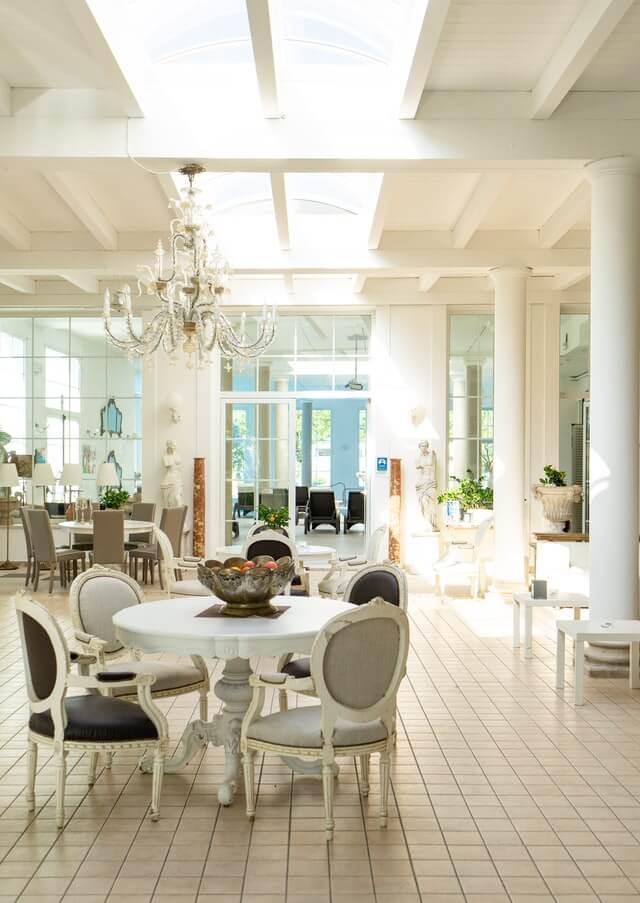Be social! Share the fun!

One of the most delicious and complex wines in the world is Sauternes. This is a golden wine produced in a region of Bordeaux, France, also called Sauternes.
The reason is that in France, wines take their name from the region where the grapes grow, not the grapes themselves.
Sauternes Food Pairing
Wine lovers savor the remarkable taste of Sauternes because racy acidity counter-balances its sweetness.
Yet a common question remains: How to pair Sauternes with food?
Many Americans think the appropriate Sauternes food pairing is at the end of a meal, with dessert. It’s a reasonable assumption: sweet wine with a sweet dessert, right?



Here’s a secret: in traditional Bordeaux society, few hosts would dare pair Sauternes with dessert.
In fact, legend has it that in the 1980s, Madame Janin of Château Climens (wife of the Climens estate manager at the time) refused to sell bottles to anyone who said they wanted it to pair with dessert.
But times change. Recently, at a press dinner for the leading journalists of the world, our host served Sauternes with dessert. Madame Janin would not be pleased.
History of Sauternes Food Pairing
Sauternes had a historic place as a “first course” wine.
It accompanied one of first courses in a lengthy, banquet style meal.
As an example, in the 18th century an appropriate Sauternes food pairing would be with salmon or turbot dish as a starter.
If that strikes you as an odd pairing, we should remember it than a century ago Sauternes wine had a lower level of residual sugar.
Because of the cooler weather patterns. The grapes did not get as ripe.
Grape Growing For Sauternes: Understanding Botrytis

Sauvignon Blanc, Semillon, and Muscadelle are the classic grapes used for this wine. They are left on the vine after harvest to encourage a process known as botrytis.
Botrytis is also called “Noble Rot” to differentiate it from the destructive rot that can form on a grape because of humid conditions.
The unique weather of the Sauternes region allows Noble Rot to proliferate throughout the vineyard that helps ripe grape to desiccate, concentrating its sugars.
It is an anxiety-ridden time for Château teams, Click to Tweet
As the grapes concentrate at different times, workers must carefully examine and pick each grape one-by-one in several vineyard visits.
It is an anxiety-ridden time for Château teams, as the threat of rain can ruin the entire harvest. This is one reason classified growth Sauternes wine can be expensive.
It takes many vineyard visits to gather these tiny, shriveled berries at the point of perfection. After vinification, the wine matures in barrels with varying amounts of new French oak.
Sauternes Food Pairing: Example of Château Coutet in Barsac

Barsac is in the Sauternes region, rendering it an appellation within an appellation.
It is the most northern of the five communes that make up the Sauternes region. The soil is clay and limestone, giving it the freshness and acidity key to producing a dry Sauternes.
In keeping with the legality of the appellation, Barsac has the option of calling its wine either Sauternes or Barsac. You can read more about the appellation of Barsac and its terroir in this Forbes.com article
Barsac has the option of calling its wine either Sauternes or Barsac. Click to Tweet
In the last few decades, Sauternes Châteaux have put extra effort in helping guests understand how to pair sweet Sauternes wine with food.
One leader is Aline Baly, the co-owner of Château Coutet, a classified First Growth. (the designation, dating from 1855, means that the estate has superior terroir, winemaking knowledge, and produces some of the best wine in the region).
“The name ‘Coutet’ comes from the word knife in local dialect.”



Though half-French, Aline Baly’s family did not own the Château from that date. Instead, her father and uncle bought it when she was a child and spent the last few decades revitalizing both the Château and its vineyards.
“I highly suggest pairing our sweet Sauternes wine with foie gras at the start of a meal,” says Aline. “And then again it’s perfect with chicken or turkey.”
It’s a common practice for Sunday night dinners here in Bordeaux to serve sweet Sauternes with dinner, and chicken is a perfect Sauternes food pairing.”
And then again it’s perfect with chicken or turkey. Click to Tweet
“In America, try it with turkey for the Thanksgiving and Christmas holidays. When my American mother made her first Thanksgiving dinner in Bordeaux, her turkey was dry. The bottle of sweet Sauternes chosen from our cellar, with its spice, complexity, and zesty acidity, paired very well and improved the dish.”
Aline Baly also encourages gastronomic-minded wine lovers to try a deliciously decadent Sauternes wine pairing with lobster.
“A simple butter sauce for the lobster is perfect,” Aline says. “You can even pair Sauternes with sea scallops accompanied by a lemon ginger sauce.”
Also Sohm, Master Sommelier and director of the 3 star Michelin restaurant Le Bernardin, offers more advice here
Sauternes Food Pairing with a Chinese Twist

Fabrice Dubourdieu, who owns Château Doisy-Daëne with his family, believes in serving Sauternes with Chinese food.
Though Mr. Dubourdieu takes special steps to match the weight, age, and style of a particular wine with a dish, this is unnecessary for average consumers.
Beyond Chinese food, Mr. Dubourdieu recommends Sauternes with all Asian food.
Mr. Dubourdieu recommends Sauternes with all Asian food Click to Tweet
“Sweet wine, especially those with a great deal of acidity like Sauternes. pair very well with the exotic, spicy flavors of Asian food.
The reason is that the lively acidity of Sauternes contrasts with the sweetness of most Asian dishes, while the rich sugar in the wine complements the food’s sweetness.
Aline Baly concurs with this pairing, mentioning that an Asian intern working in her winery brought a curry to a potluck dinner that paired well with the Château Coutet wines.
Sauternes Wine Pairing: As a Simple Apéritif

A straightforward way to enjoy Sauternes is as an apéritif,
Hosts serve Sauternes to greet guests the same way as most people around the world pop open a bottle of Champagne.
The Bordeaux tradition is for the bottle of Sauternes to sit on ice as guests arrive for the occasion. Because this wine is so intense and concentrated, a single bottle can serve a dozen guests.
Specially designed glasses from leading glassmakers can bring out more apricot, peach, and other nuances of complexity of this wine. Yet a simple white wine or digestif glass will also be fine.



Sauternes Food Pairing: The Dry Sauternes Style
Over the last few decades many consumers have called for drier style of Sauternes, ranging from truly “dry” to off-dry.”
The drier style of Sauternes still pairs well with the usual suspects (chicken, turkey, seafood) but lends itself to a wider repertoire of first courses, salads, and pasta dishes.
For the last decade, Château Coutet has become increasingly known for its limited production of dry wine, called Opalie de Château Coutet.
The first production of Opalie de Château Coutet in 2010 followed the trend of other classified growth Sauternes estates producing dry whites. These estates include Château Yquem’s ‘Y’ and “S de Suduiraut” from Château Suduiraut.
“Our aim was to create a truly terroir-based wine,” Aline Baly says, speaking at length about her estate’s excellent terroir. (You can read more about Sauternes Terroir in this Forbes.com article:
“We made this wine from vineyards in a neighboring appellation. It was not spectacular because that soil lacked true specificity. It was nothing like the terroir we have on our own first-growth estate.
So I spoke with my uncle (and co-owner) and we agreed to plant vines on our estate and make a dry wine representative of the terroir of Barsac and worthy of our First Growth name.
*More information about Sauternes is found here



Winemaking of Opalie de Château Coutet
They make this dry wine using 50% Sauvignon Blanc and 50% Sémillon grapes. The Baly family sources the grapes from forty year-old vines planted in clay and limestone.
Fermentation occurs in new French oak barrels, with the wine further aged in a mix of new and older French oak.
Visiting Château Coutet
In normal times, it is possible to visit many Châteaux in Bordeaux, Château Coutet included.
Aline Baly has created some interesting programs at Château Coutet so visitors could better understand the terroir and the wine.
You can find out more information by visiting the Château Coutet website and also reading about more casual ways to enjoy Sauternes here